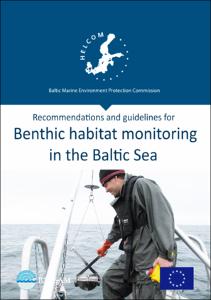| dc.contributor.editor | Bojārs, Edgars | |
| dc.coverage.spatial | Baltic Sea | en_US |
| dc.date.accessioned | 2024-05-12T19:45:41Z | |
| dc.date.available | 2024-05-12T19:45:41Z | |
| dc.date.issued | 2015 | |
| dc.identifier.citation | HELCOM (2015) BALSAM Project 2013‐2015: Recommendations and Guidelines for Benthic Habitat Monitoring with Method Descriptions for Two Methods for Monitoring of Biotope and Habitat Extent. Helsinki, Finland, HELCOM, 62pp. DOI: https://doi.org/10.25607/OBP-1998 | en_US |
| dc.identifier.uri | https://repository.oceanbestpractices.org/handle/11329/2467 | |
| dc.identifier.uri | https://doi.org/10.25607/OBP-1998 | |
| dc.description.abstract | Work package 6 of the BALSAM Project dealt with Baltic benthic habitat monitoring methods and programmes useful for the Marine Strategy Framework Directive (MSFD). This included both as-sessing the usefulness of monitoring methods, which are operational today, and suggesting new methods for filling the gaps for MSFD needs.
This document describes the recommendations and guidelines for benthic habitat monitoring in the Baltic Sea, which have been developed within the BALSAM project. The work has been performed in cooperation between experts in Estonia, Latvia, Lithuania and Sweden with additional input from experts in Finland and Germany.
A large number of survey methods were catalogued within this project and gaps in existing monitoring of benthic habitats in the Baltic Sea were identified (see the online monitoring manual as well as the first BALSAM interim report).
In this report, we describe the use of drop-video and grab methods for monitoring habitat and bio-tope extent in shallow coastal waters of the Baltic Sea. The HELCOM Underwater Biotope and habitat classification (HELCOM HUB) is recommended for classification of benthic habitats. The HELCOM HUB system and relation to habitats listed in Habitats Directive Annex 1 are described in section 3.
Section 4 first describes area based methods for habitat and biotope monitoring and lists proposed methods for monitoring extent for HUB-classes. Method descriptions for drop-video and simplified grab sampling with a small Van-Veen grab are provided. Recommendations on identification of HUB-classes (level 5) with these methods are also provided. Section 4.4 compares cost-effectiveness of the newly proposed methods (drop-video and simplified small grab) to the conventional benthic moni-toring methods (diving and grab sampling) using a large Van-Veen grab. Potential advantages of combined drop-video and grab surveys are discussed in section 4.5 and the applicability of an image recognition method for automated analysis of zoobenthos is evaluated in section 4.6.
Recommendations on habitat monitoring in the Baltic Sea based on the proposed methods are pro-vided in section 5. Recommendations are given on aspects such as monitoring effort needed and sampling strategy based on statistical analyses performed on datasets collected in different areas.
A widely applicable and easy-to-use common data format for exchange of data is proposed in section 6.
Before launching monitoring programmes, baseline mapping surveys should be performed and back-ground information on the diversity of existing biotopes and their distribution obtained. Since this may require specific mapping surveys and spatial modelling using experience from numerous case studies described in the literature, this is not further reflected in this report. | en_US |
| dc.description.sponsorship | European Commission DG Environment and project partners | en_US |
| dc.language.iso | en | en_US |
| dc.publisher | HELCOM | en_US |
| dc.subject.other | Sampling | en_US |
| dc.subject.other | Monitoring | en_US |
| dc.subject.other | Benthic habitat monitoring | en_US |
| dc.subject.other | BALSAM Project | en_US |
| dc.subject.other | Survey methods | en_US |
| dc.title | BALSAM Project 2013‐2015: Recommendations and Guidelines for Benthic Habitat Monitoring with Method Descriptions for Two Methods for Monitoring of Biotope and Habitat Extent. | en_US |
| dc.title.alternative | Recommendations and Guidelines for Benthic Habitat Monitoring with Method Descriptions for Two Methods for Monitoring of Biotope and Habitat Extent. | en_US |
| dc.type | Report | en_US |
| dc.description.status | Published | en_US |
| dc.format.pages | 62pp. | en_US |
| dc.contributor.corpauthor | HELCOM | en_US |
| dc.description.notes | Authors: Nicklas Wijkmark, Karl Florén, Johan Näslund, Martin Ogonowski, Juris Aigars, Darius Daunys, Aleksej Saskov, Heidrun Fammler, Georg Martin, Katarina Oganjan
Contributors: Alexander Darr, Kolja Beisigiel, Ville Karvinen, Mona Naeslund | en_US |
| dc.description.refereed | Refereed | en_US |
| dc.publisher.place | Helsinki, Finland | en_US |
| dc.subject.parameterDiscipline | Macroalgae and seagrass | en_US |
| dc.subject.dmProcesses | Data acquisition | en_US |
| dc.description.currentstatus | Current | en_US |
| dc.description.sdg | 14.2 | en_US |
| dc.description.eov | Macroalgal canopy cover and composition | en_US |
| dc.description.maturitylevel | Pilot or Demonstrated | en_US |
| dc.description.adoption | Multi-organisational | en_US |
| dc.description.adoption | International | en_US |
| dc.description.methodologyType | Method | en_US |
| dc.description.methodologyType | Specification of criteria | en_US |
| dc.description.methodologyType | Reports with methodological relevance | en_US |
| obps.contact.contactemail | info@helcom.fi | |
| obps.resourceurl.publisher | https://helcom.fi/helcom-at-work/publications/manuals-and-guidelines/ | |
| obps.resourceurl.publisher | https://www.aquabiota.se/wp-content/uploads/Wijkmark_etal_2015_Recommendations_guidelines_benthic_habitat_monitoring_HELCOM.pdf | |
 Repository of community practices in Ocean Research, Applications and Data/Information Management
Repository of community practices in Ocean Research, Applications and Data/Information Management
